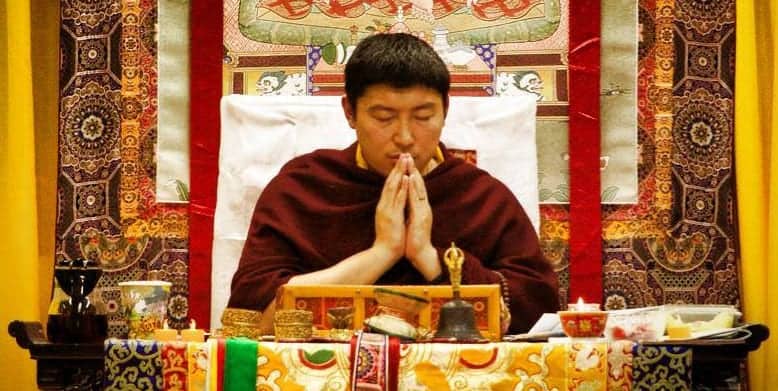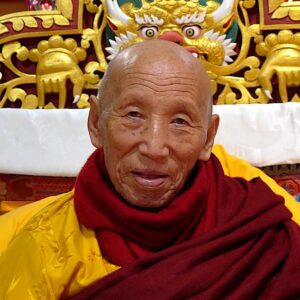Faith and the Mind: Important Connection
Phakchok Rinpoche responds here to a student question —What is the relationship between faith and the mind?
Mind As Steady Base
Rinpoche explains that the mind is the base. He then uses the metaphor of a beautiful flower, on that fundamental base, to represent the steadiness of faith.
Rinpoche remarks that human nature needs faith–it can be very supportive. If one has faith, then you can change many things; it allows us to evolve.
Faith and Mind: Three Expressions of Faith (dad pa gsum)
Expressions of faith are traditionally broken down into three categories. Different translators use varying terms. Rinpoche explains these in a way that connects directly to our Dharma practice. If we reflect on these three steps we understand how they relate to our own possible transformation.
- Inspired Faith (dang ba’i dad pa) comes from observing qualities of another and admiring
- Faith wanting to achieve ( ‘dod pa’i dad pa) –actually following the example, doing something yourself
- Confident or trusting Faith (yid ches kyi dad pa) realizing that you have changed by practicing–now you have certainty
Faith Lost and Found
Rinpoche then responds to a question about loss of faith. He explains that faith can easily be lost because our mind changes so quickly. But the good news is we can stabilize it, or bring it back, or find it anew. Why do we lose faith? Loss of faith means that the experience of dharma practice is not stable; it is still shaky.
Rinpoche gives us advice based upon his personal experience. He tells us to inspire ourselves by reading life stories of masters and teachers who inspire us. He also cautions us that perfectionists and those with very analytical minds may take longer to develop faith–but just read the stories and don’t try to over-think!
Reflection Question
Honestly look at your own situation and practice. Which of the three types of faith would you say you demonstrate? If you believe you have inspired faith, try to grow that by reading some life stories. Have you read some biographies of past masters that have really sparked a desire to practice? What else have you done to fan the flames of faith?
This month, set some time aside to inspire yourself–like exercise, you have to really resolve to do this. It is a lot healthier for your mind than scrolling without thinking through internet stories! At the end of the month, what has moved you? What stories were particularly meaningful–or what living examples of dharma practice resonated?











Responses
[…] You might also want to consider the role of faith and the mind by reviewing this teaching. […]